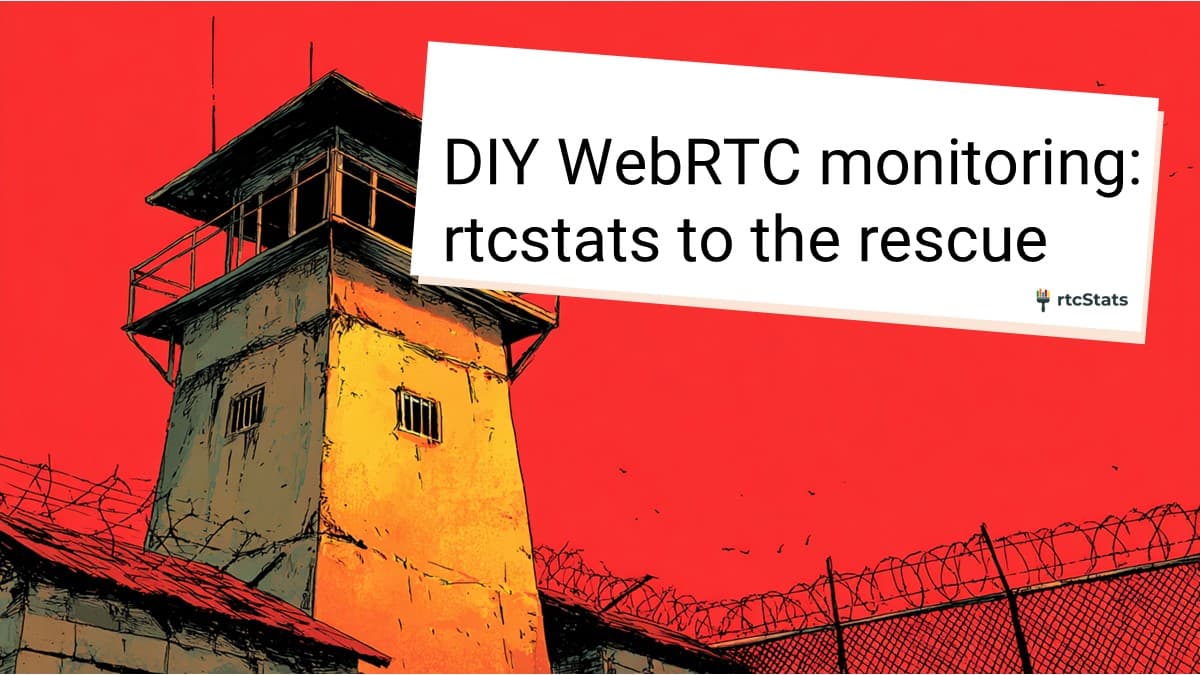DIY WebRTC monitoring: rtcstats to the rescue
Learn how to build your own WebRTC monitoring solution with rtcstats. Control costs, own your data, and customize your metrics collection.
Posted by
Related reading
Can webrtc-internals be improved upon?
Yes, webrtc-internals can be improved upon. Discover its limitations and how rtcStats provides a better solution for WebRTC monitoring.
Why do you need to collect WebRTC statistics on the device side?
Discover why server-side monitoring isn't enough for WebRTC and how device-side statistics collection can transform your user experience.

If you are running a WebRTC application, then you need to monitor it. Not only the infrastructure but also the end user devices.
The problem is, there aren't that many alternatives out there today…
Assuming you want to own and control your own metrics, which many vendors do, then you have even less of a choice. You're almost down to only building it all by yourself from scratch.
The schematic of a WebRTC monitoring solution

All of us here at rtcStats have done it more than once - either directly or indirectly by instructing others how to build it.
If i had to illustrate how a solution for collecting and processing WebRTC metrics from the devices looks like, it would be something like this schematic:

The WebRTC statistics get collected from the web browser directly. All these metrics and telemetry data is collected by a dedicated server which then needs to analyze and store the information in databases.
4 tasks:
- Send to server
- Collect from devices
- Analyze metrics and events
- Store and track
Why use rtcstats in your DIY WebRTC monitoring

There are 3 main reasons for DIY'ing your WebRTC monitoring:
- Cost management. 3rd parties can get expensive as you grow
- Data ownership. You want to own your data and not have 3rd parties store it
- Customizability. Enriching the data with your application logic to gain a true view of the user's journey and experience
If you decide to take this route, then here's how rtcstats can help you.
Remember the 4 tasks? Send, Collect, Analyze, Store? rtcstats can fill in 3 out of these 4 tasks:
- Send can be achieved using rtcstats-js client SDK (an open source module you integrate with your JS app in the browser)
- Collect is exactly what our rtcstats-server is there to do (another open source module you can make your own)
- Analyze that's rtcstats.com, which is free for debugging and troubleshooting, but requires a subscription service with us for monitoring. It goes above and beyond anything else you've seen on the market for WebRTC
That Store part? We leave that to you. We know you want to control and own it, so we're simply here to help you in putting all that collection and analysis pipeline in place.
If you're interested to learn more about what we do and how, be sure to contact us - we're a single email away from you.